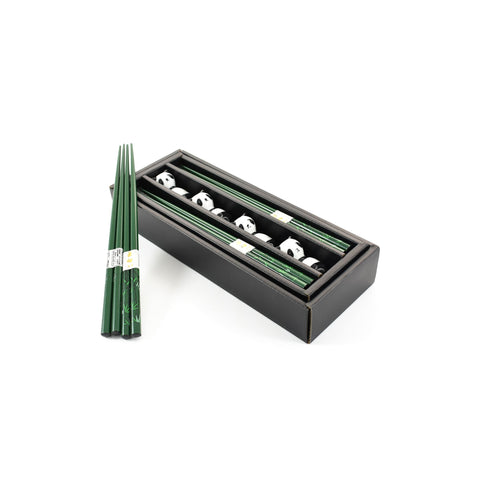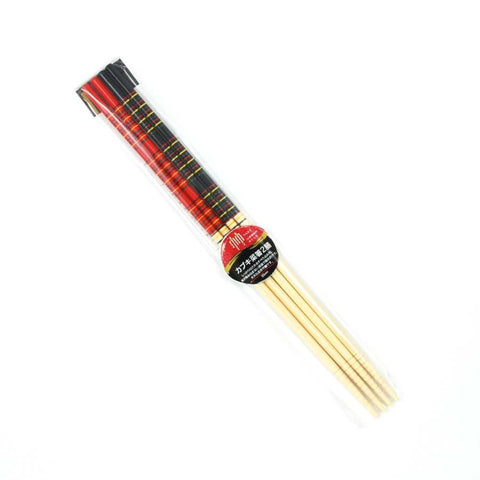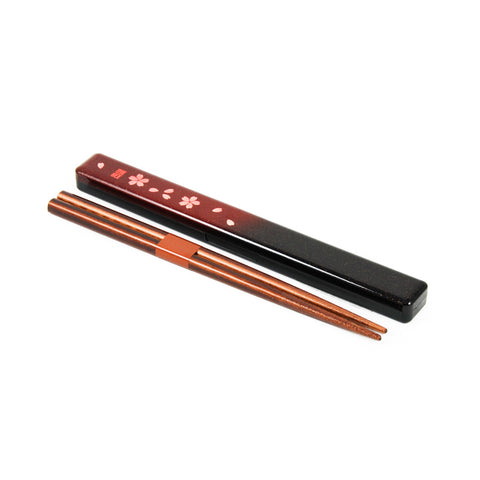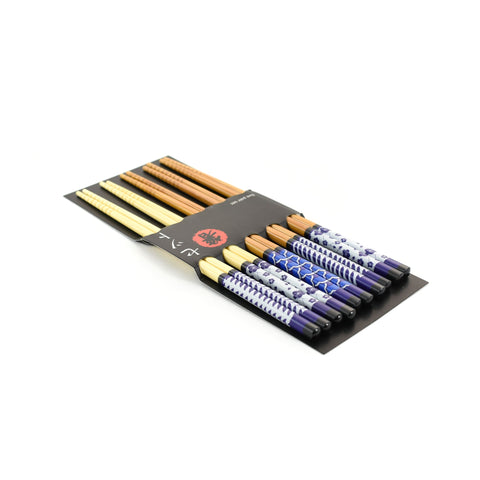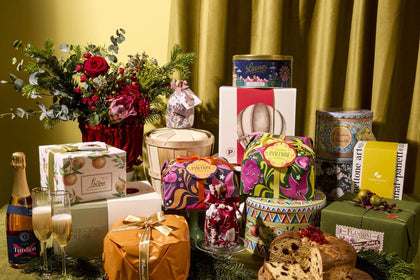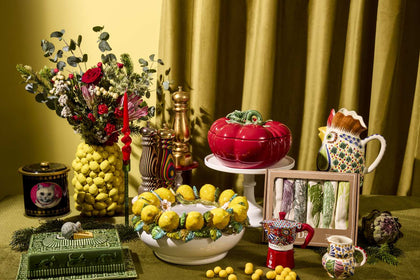How To Use Chopsticks

For those of us who enjoy Asian food, using chopsticks is an essential part of the dining experience. However, if you didn't grow up eating with chopsticks, sometimes it can be easier said than done, and there’s nothing worse than going out to dine and forgetting your chopstick etiquette.
We’ve compiled some interesting facts about chopsticks, coupled with how to use them and the dos and don’ts, so that you’ll won't have to worry about how to use chopsticks again.
How to use chopsticks correctly
Using chopsticks needn’t have to be difficult. Take a look at these 3 easy steps to using chopsticks:
- Start with a loose hand and place the first chopstick between the thumb and ring finger, with it balancing on your ring finger.
- Then, take the second chopstick and rest it on your middle finger, with your thumb loosely gripping the top edge of the chopsticks.
- Use your thumb and ring finger to hold the bottom stick in place whilst using your index and middle fingers to open and close your chopsticks to pick up food.
What are the different types of chopsticks?
There are many different types of chopsticks. The main six varieties are:
- Chinese: Chineses chopsticks like these painted-style wooden chopsticks are long and characterised by a rounded or blunt end.
- Japanese: The Japanese use chopsticks that are shorter and more sharply pointed, like these pointed black chopsticks.
- Korean: Korean chopsticks are also shorter, but are often blunt at the end and flat at the top. They also differ in that they are usually made from metal, like these Stainless Steel Chopsticks.
- Vietnamese: Vietnamese chopsticks are usually longer and thicker, and can be made from wood or bamboo.
- Disposable chopsticks: A pair of disposable chopsticks is usually made of a single piece of wood, that is only broken into two pieces just before eating. Disposable chopsticks are as often seen in street-corner noodle shops, as in fine-dining sushi restaurants in Japan.
- Cooking chopsticks: These are much longer chopsticks, better for reaching into cooking pots to stir, lift out fried foods or toss salads. It would be very tricky to eat with them!
Surprised not to see more southeast Asian varieties on that list? Contrary to popular belief, chopsticks are rarely used for Thai and Malaysian food.

Metal chopsticks at a Korean BBQ in Seoul
What's the history of chopsticks?
Chopsticks have a rich and interesting cultural history. They date back to 7000 years ago, and are one of the simplest and most widely used utensils in the world. It’s believed that they started their life as utensils that helped Asian cultures reach, stir and dip into pots of food that were too hot for the hand.
From this humble beginning, using chopsticks is thought to have evolved after being adopted by the Chinese during the first century, as wheat became part of their diets. Then, as the increased consumption of rice became widespread across Asia, the use of chopsticks became the dominant utensil throughout Asia - from China to Vietnam, Korea, and Japan.
Why aren't chopsticks found in Western cuisine?
We can’t give a definitive reason as to why chopsticks aren’t found in Western cuisine. However, we can guess that the lack of chopsticks in Western cuisines is probably due to the ways in which we cook our food.
Traditionally, many Asian and Eastern dishes are characterised by boiling and frying food – which the chopstick is perfect for. Conversely, Western cultures more traditionally baked, grilled and roasted their food which doesn’t require the stick-like objects for moving the food around quickly in cooking.
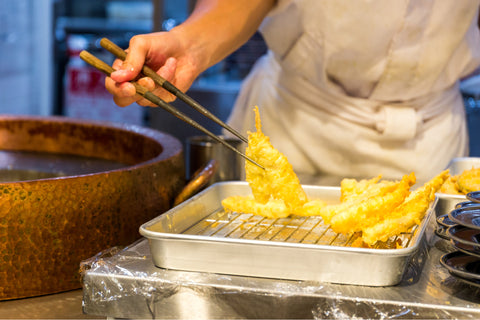
Cooking tempura using chopsticks in Japan
Chopsticks are also best for eating foods which are already cut into bite-size pieces before serving - which is the case in most Asian dishes. In most western dishes, it’s usually necessary to use a knife at the table.
Extra things to know about how to use chopsticks
If you really want to use chopsticks with confidence, here are some top tips that will help you utilise chopsticks in the right way.
- Lean in to meet your chopsticks if you’re struggling to make it from plate to mouth. Or even lift your bowl or plate to make the distance to mouth shorter.
- Keep the bottom chopstick as still as possible and allow any movement to come from the top stick.
- Holding the chopsticks higher up is harder. You get a lot more range by holding them at the top, but for beginners holding lower down the stick will give you more control.
- Don’t grip too hard, or your delicious food will go flying. Aim to nestle the first chopstick in the crevice of the thumb for stability rather than crushing it with your fingers.

Don'ts of using chopsticks
- In Japanese culture, it’s advised not to stick chopsticks into rice, or any food upright. Whilst it may seem like an easy resting place for your utensils, it is thought of like a funeral ritual in Japan and is considered bad luck - not a good look.
- In Taiwanese culture placing chopsticks on the table is considered bad etiquette. They should be placed on a rest or parallel to one another on the top of your bowl.
- In Korean culture bringing a bowl to your mouth to eat with chopsticks is bad etiquette, however, in China and Japan, it is completely fine.
Which chopsticks should I buy?
This set includes four pairs of dark wooden chopsticks with four pebble-shaped chopstick rests in blue and white patterns.
This two-pair set of Japanese cooking chopsticks are used for food preparation rather than dining. At 33cm, the sticks are longer and thicker than usual chopsticks.
The sakura travel chopsticks are the easy way to take chopsticks wherever you go. The plastic case features an elegant sakura design. It keeps your chopsticks clean before a meal, and everything else in your bag clean afterwards!
Chopsticks for beginners cutlery set combines chopsticks, a spoon and fork into two sleek bamboo utensils. This multipurpose set is an easy way to eat sushi and noodle soups, or for those that are yet to master individual chopsticks.
This set of five bamboo chopsticks comes with both cream and light brown chopsticks, each finished with a different blue and white pattern including flowers and geometric designs. Each set of chopsticks have grooves carved into the narrow ends to give extra support on slippery noodles.
Frequently Asked Questions
What is the best material for chopsticks?
The ideal material for chopsticks is wood or fibreglass. Wood is a low conductor of heat, so the food stays hot while the chopsticks stay cold. Some wooden chopsticks have a lacquered coating, meaning they can be washed and used time-and-time again. Fibreglass chopsticks tend to be more durable, great for everyday use.
Are wooden chopsticks dishwasher safe?
To protect the surface of your wooden chopsticks, we recommend you hand-wash rather than cleaning them in the dishwasher.
